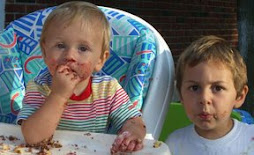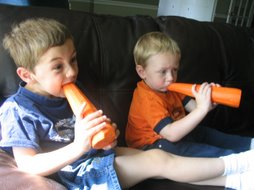So we found a beautiful stand of White pines up in the mountains about 13 miles south of la salette. I went to meet with a logging company who had purchased the rights to the sector and managed to mark out 45 of their largest trees for the cabin. Although we only needed 38, it is safe to go with a few more so you always have the right log for the right place. I gave the loggers $10 500 cash right there in the bush with a handshake that the logs would be delivered to our dry in site. Pretty stupid now that I think of it, even if I had him scribble a receipt on the back of a business card.
If you are wondering what a "dry-in" site is I will explain. It is a convenient location to build a log cabin. In this case it was an open field with a crane, electricity and a shipping container to lock our tools in. This is where we will build the cabin only to be later dissasembled and shipped up to our foundation where it will be re-assembled and remain for the next century or so (hopefully).
I contracted a man named Jim Flynn (Flynn log homes) It turns out he was slow this year (like no projects at all) and so was more disposed to take pity on this poor boy with high hopes. He cut me a deal. Then he lowered it when I commited to help 2 days a week for the next 2 months. We settled at $25 000 for the shell. (I feel weird publicizing the numbers but I have already started a running talley on the previous post to fully document the project).
The last week in March was "Go day" we double checked the measurements of my foundation (which was out by 3 inches in one corner because I'm a salesman not a builder). Next we went and levelled the dry in site and squared it to match my foundation. Early April we were having some pretty warm weather and by this time my logs had thawed and we started to peel them. When logs are cut in the summer they peel like a banana because the sap is running. However, ours were winter cut. This is advantages not for peeling but for keeping out bugs. If you summer cut then you need to work them quick and cant take time to set up or the bugs will get in them.
Logs can be peeled with a draw knife or a spud. Since I had neither, I brought an ice pick and a third guy we had hired to help us, Michel ( I like him alot, a humble man who is patient and likes to teach - reminds me of my father a bit) took my ice pick and put it on the grinder to round out the edges so it would slice through the bark better. So I ended up using a modified ice pick which didnt' work well at all, or so I thought. It turns out that the ice pick actually worked out relatively well, the problem was that it was hard work and it has been a while since I've put these bones to a good rattlin.
After the peeling we took a pressure washer to remove the cambrium layer so as to leave nothing to desire for the bugs. We could now let the logs sit until we needed them.
Most of my days after that were spent planing the logs. I used a hand planer and planed every square inch of every log before we used it. It was a grueling job that started out taking 2 hours a log and in my prime I was able to knock one out in about 45 minutes depending on the knots and crevices to navigate. This step made the logs look gorgeous and they became easier to scribe and notch a tight fit as well. I also spend alot of time strapping up for the crane and then placing them where they were to go. I didn't do the scribing but I observed and took notes. There are so many little nuances to the entire process I think I would have to do another project or two before I felt comfortable to try one unassisted.
I never took the crane for granted. Even to the end I was amazed at how dependant we were on that crane and how beautiful it was to work with it. It was a 100' boom extention on a 23 tonne crane that Jim bought second hand. I often felt how I think the soldiers in Afghanastan might feel working with air support. It is like a magical hand drops from the sky with what you want when you want it and where you want it. Just hook up the log you want moved and then walk to where you want it moved and Voila, it drops from the sky.
It was so exciting to see the walls going up one by one. The scribes were tight. There are no spaces and no need for chinking. Jim said this was the first cabin he has done where the customer had requested a full upstairs. They always do a half loft or mezzanine to overlook the great room. But I wanted living area because I was afraid this was money for a too tiny of a cabin. We are now very comfortable with the space this cabin will provide.
Next comes "Le Montage". The erecting. There were a couple things that had to be done before the cabin could go on the foundation. The problem was that I had gotten ahead of myself and booked a crane to show up on the property on a certain day to unload the cabin. This send us scrambling. Nothing was more important now because the crane was booked and a hefty down payment made. If you are wondering why we didn't use Jims crane it was because it wasnt big enough to boom the logs as far as we needed and he didn't have a license for it so he cant operate it off his property. The crane rental cost us $160/ hour and it was a 2 day project! During "le montage" I felt like I did when I sat in my car praying and yes, crying, as I watched the drillers drill our well at $25.00 / foot a couple years ago. Anyhows, I digress....... scrambling.....oh yes...... So we were scrambling to be ready for the crane. The logging truck that

















